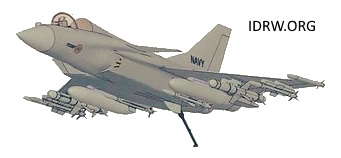SOURCE: AFI

The TEDBF (Twin Engine Deck Based Fighter) program, a critical component of India’s indigenous defense manufacturing initiative, represents a significant step forward in strengthening the nation’s aerospace capabilities. A pivotal decision facing this program is the choice of the engine. Advocating for the 80kN Kaveri engine over the foreign F-414 engine is not just about fostering self-reliance; it also presents a strategic and operationally sound choice. Comparing the Kaveri engine to the Rafale M’s M-88 engine further highlights its potential benefits.
The Kaveri engine, an indigenous project by the Gas Turbine Research Establishment (GTRE) of India, offers a thrust of 80kN. Its integration into the TEDBF would mark a significant milestone in India’s journey towards defense self-reliance. Currently, the Kaveri engine is approaching technological maturity, and its inclusion in a high-profile project like the TEDBF would provide the necessary impetus for its final development stages, ensuring it enters production.
To understand the feasibility and benefits of using the Kaveri engine, it is essential to compare it with the M-88 engine used in the Rafale M, which shares a similar Maximum Take-Off Weight (MTOW) of 25 tons with the TEDBF.
The Rafale M is powered by the Snecma M-88 engine, which produces 75kN of thrust. In contrast, the Kaveri engine delivers 80kN of thrust. This additional thrust provides a marginal yet critical edge in terms of performance, particularly in scenarios requiring rapid acceleration and maneuverability.
Both engines are designed to power aircraft with similar MTOW. The Rafale M’s performance and operational success with the M-88 engine suggest that the TEDBF, with a slightly more powerful Kaveri engine, would meet or exceed these benchmarks, ensuring optimal performance.
The alternative option for the TEDBF program is the F-414 engine, which generates 98kN of thrust. While this might appear advantageous at first glance, several factors make the Kaveri a more strategic choice: Using the Kaveri engine promotes the development and production of indigenous technology, reducing reliance on foreign suppliers and enhancing national security.
Developing and producing the Kaveri engine domestically would be more cost-effective in the long run. It would also stimulate the local economy by creating jobs and fostering a skilled workforce. Reliance on foreign engines like the F-414 can lead to vulnerabilities in terms of maintenance, spares, and upgrades. The Kaveri engine, being domestically produced, would provide greater control over these critical aspects.
By committing to the Kaveri engine for the TEDBF program, India can ensure that the engine moves into production, marking a significant achievement in the nation’s defense manufacturing capabilities. This move would also pave the way for future projects, creating a robust pipeline of indigenous technology.
Moreover, the operational experience gained from the TEDBF program would feed back into further refining and enhancing the Kaveri engine, creating a virtuous cycle of innovation and improvement.